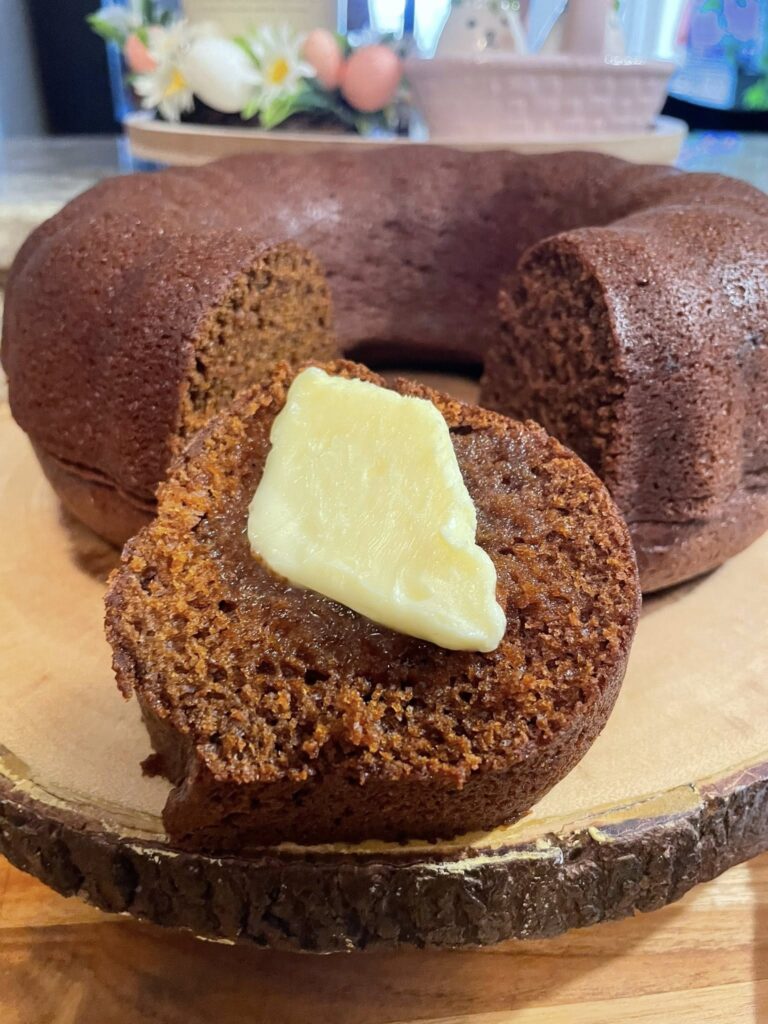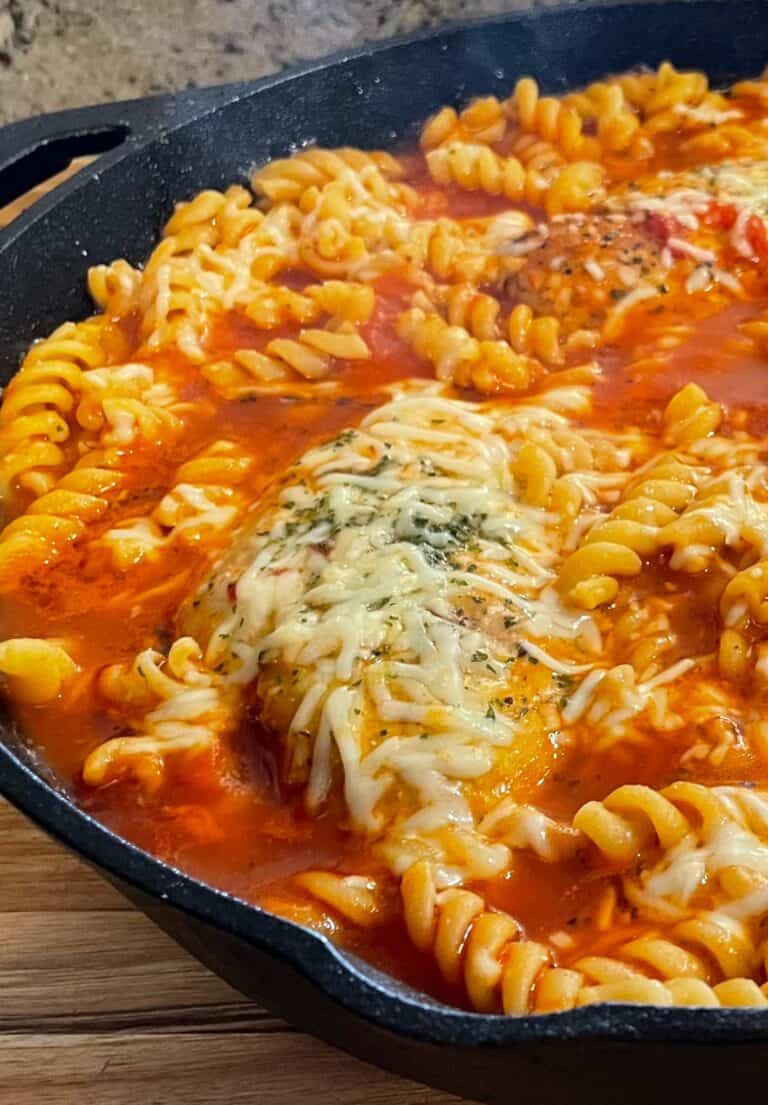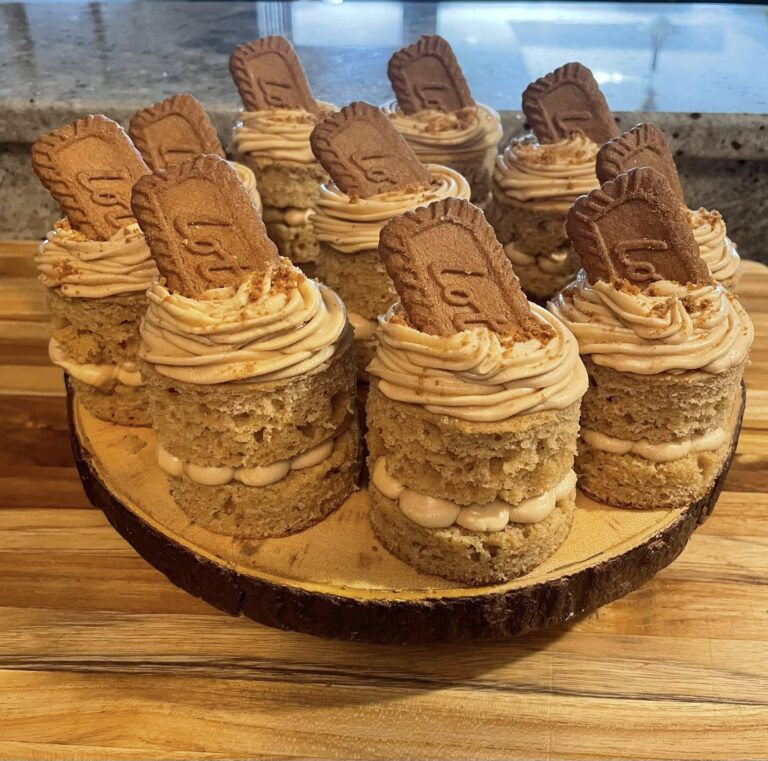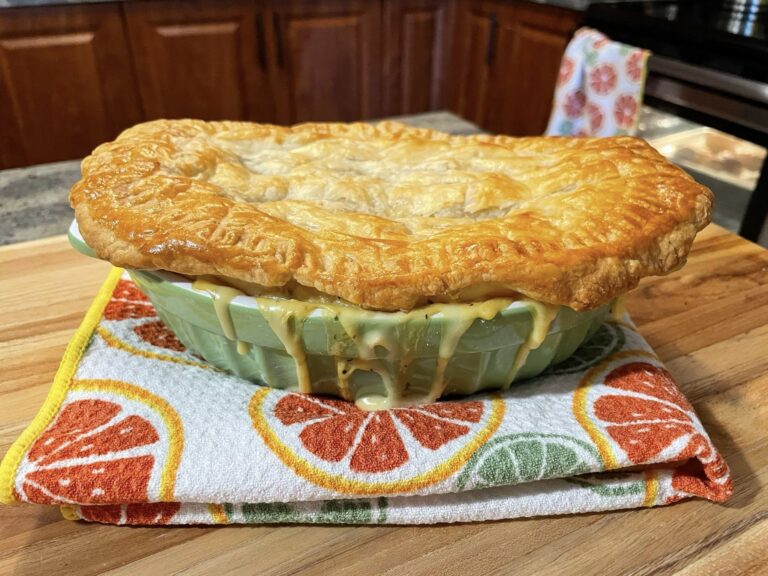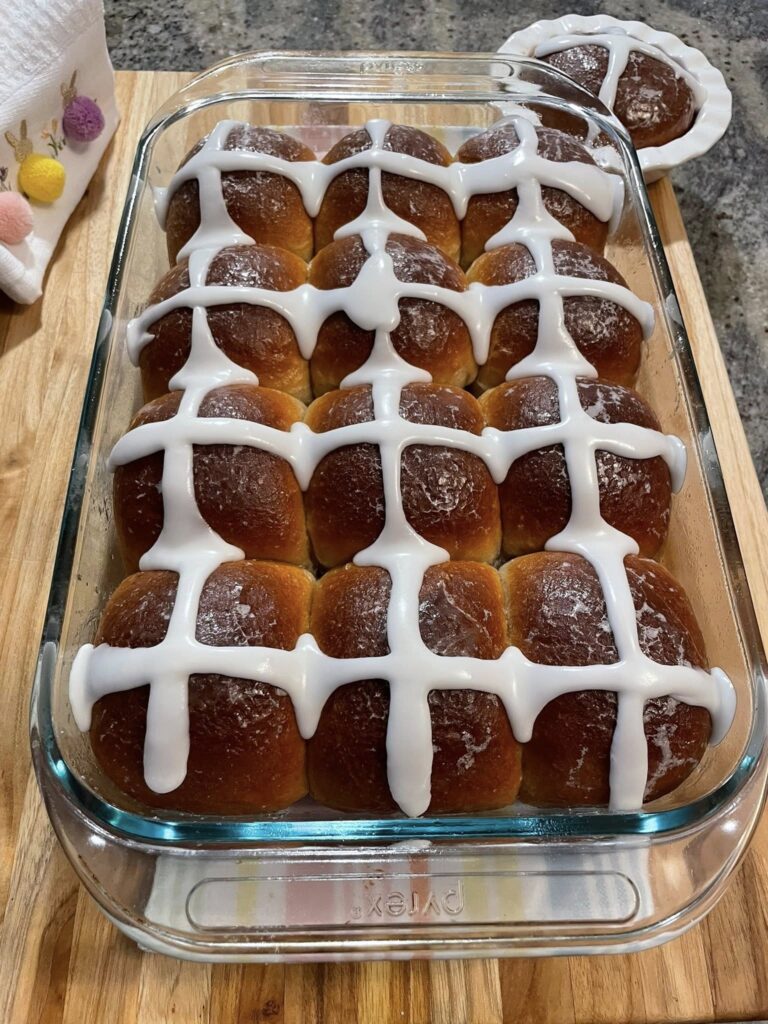Old-Fashioned Buttermilk Biscuits – Soft, Fluffy & Homemade
Old-Fashioned Buttermilk Biscuits – Soft, Fluffy & Homemade
There’s something magical about pulling a pan of old-fashioned buttermilk biscuits out of the oven — that golden top, the buttery smell, and the promise of something warm and comforting. In our house, they’re just as likely to end up next to a steaming bowl of homemade turkey soup as they are topped with sweet strawberries and whipped cream for dessert.
This recipe comes straight from a well-loved handwritten notebook, the kind with smudges and scribbles from years of Sunday mornings and family dinners. And yes, I’ve got a little twist on the original — half shortening, half cold butter — because that’s how we get that perfect flaky rise and rich flavor.
A Little Biscuit History: Buttermilk biscuits became a Southern kitchen staple in the 19th century when flour became more widely available. Back then, they were often made with lard and baked in cast iron, served with molasses or gravy. Families passed down their biscuit recipes through generations, often without written measurements — just “a handful of this” and “enough milk until it feels right.”
Did You Know? The tang from buttermilk doesn’t just add flavor — it reacts with baking powder for a higher rise.
Quick Recipe Snapshot
| Course | Cuisine | Prep Time | Cook Time | Total Time | Servings | Keyword |
|---|---|---|---|---|---|---|
| Bread/Side | Southern | 15 mins | 12–20 mins | 30–35 mins | 10–12 | old-fashioned buttermilk biscuits |
Ingredients (exact from original with adjustment noted)
- 3 c flour
- 3 tbsp sugar
- 4 ½ tsp baking powder
- 1 tsp salt
- ¾ tsp cream of tartar
- ½ c shortening (or ¼ c shortening + ¼ c cold butter for richer flavor)
- 1 beaten egg
- ¾ c buttermilk
Step-by-Step Instructions
Step 1 – Mix the dry ingredients
In a large bowl, stir together the flour, sugar, baking powder, salt, and cream of tartar.
💬 Your Turn: What’s your go-to flour brand for biscuits? Share in the comments so we can compare!
Kitchen Hack: Whisking instead of just stirring helps fluff the flour and gives your biscuits a lighter texture.
Step 2 – Cut in the fat
Add the shortening (or shortening + cold butter). Use a pastry cutter or two knives to work it in until the mixture looks like coarse crumbs.
Did You Know? Cold fat is key to flaky biscuits. Those little chunks melt in the oven and create perfect pockets of tenderness.
Step 3 – Combine wet ingredients
Beat the egg and stir it into the buttermilk. Pour this mixture into the dry ingredients. Gently stir until just combined — no overmixing!
Kitchen Wisdom: Overmixing is how you turn tender biscuits into hockey pucks.
Step 4 – Shape the dough
Pat the dough out on a floured surface to your desired thickness (thicker biscuits = longer bake time).
Pro Tip: Dust the top lightly with flour before cutting for cleaner edges.
Step 5 – Cut and arrange
Cut biscuits with a floured cutter and place them on a parchment-lined baking dish.
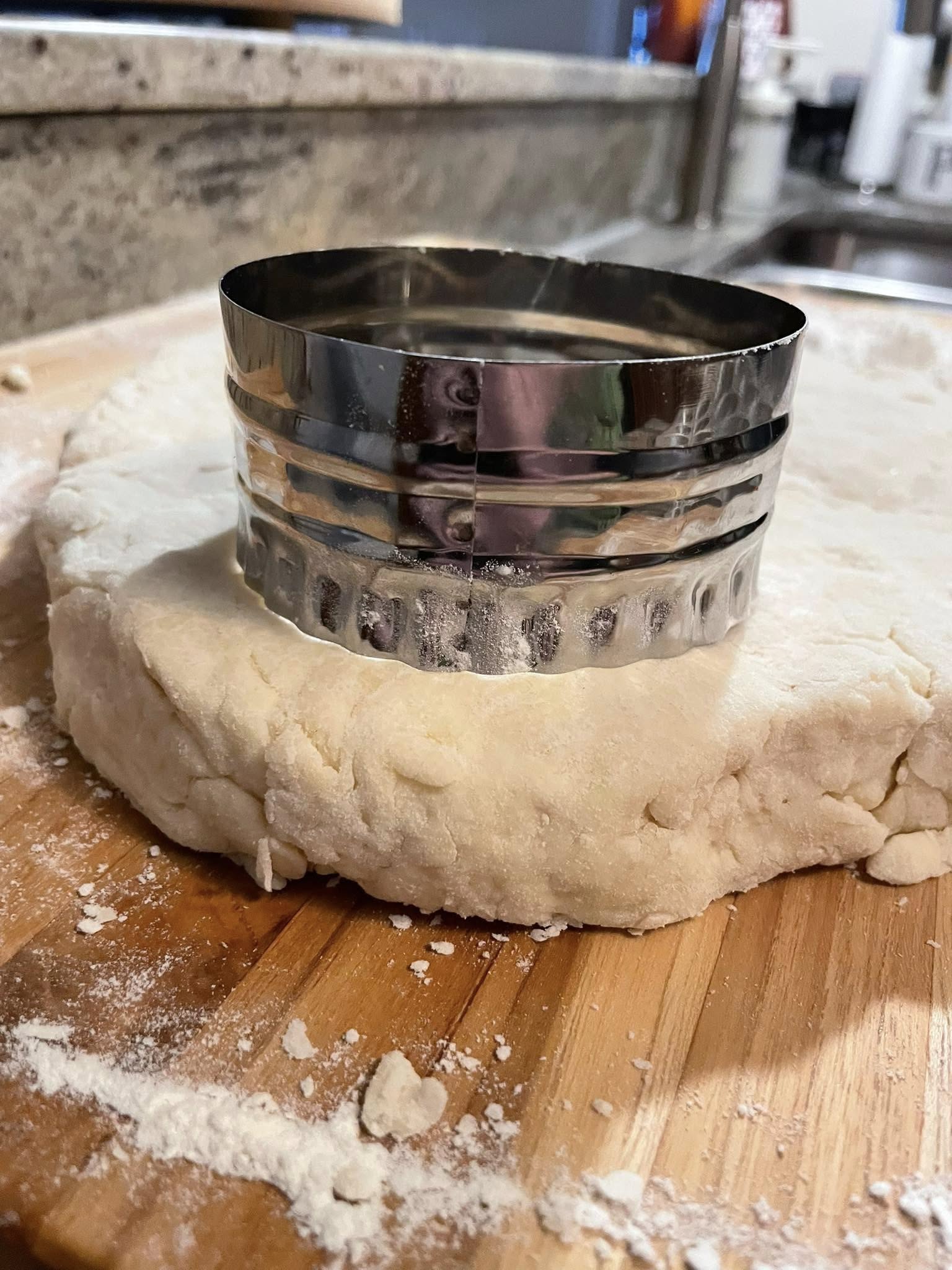
Southern Tradition: Many bakers place biscuits close together so they rise taller and stay soft on the sides.
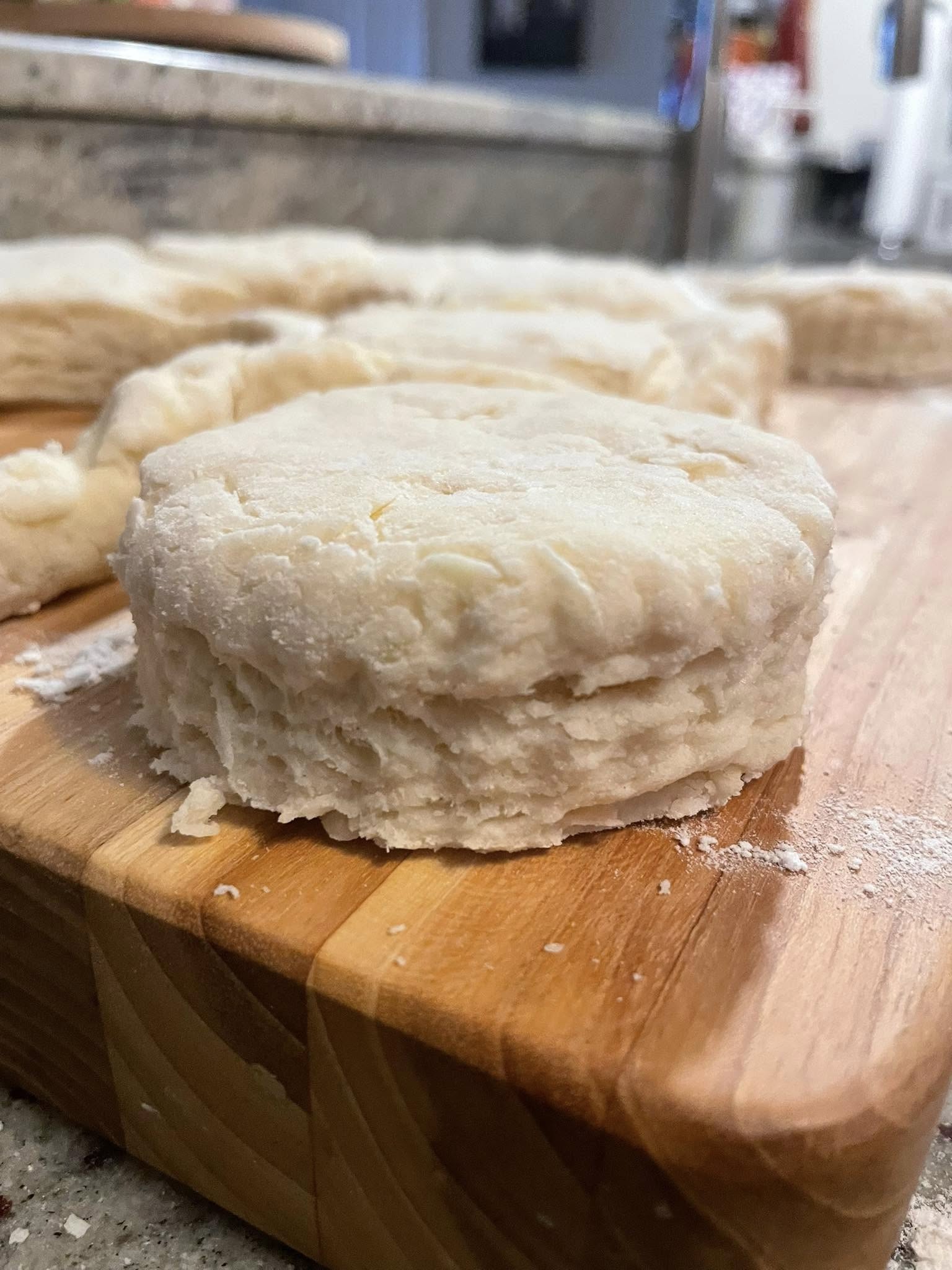
Step 6 – Bake
Bake at 425°F for about 12 minutes, or up to 20 minutes for thicker biscuits, until golden brown.
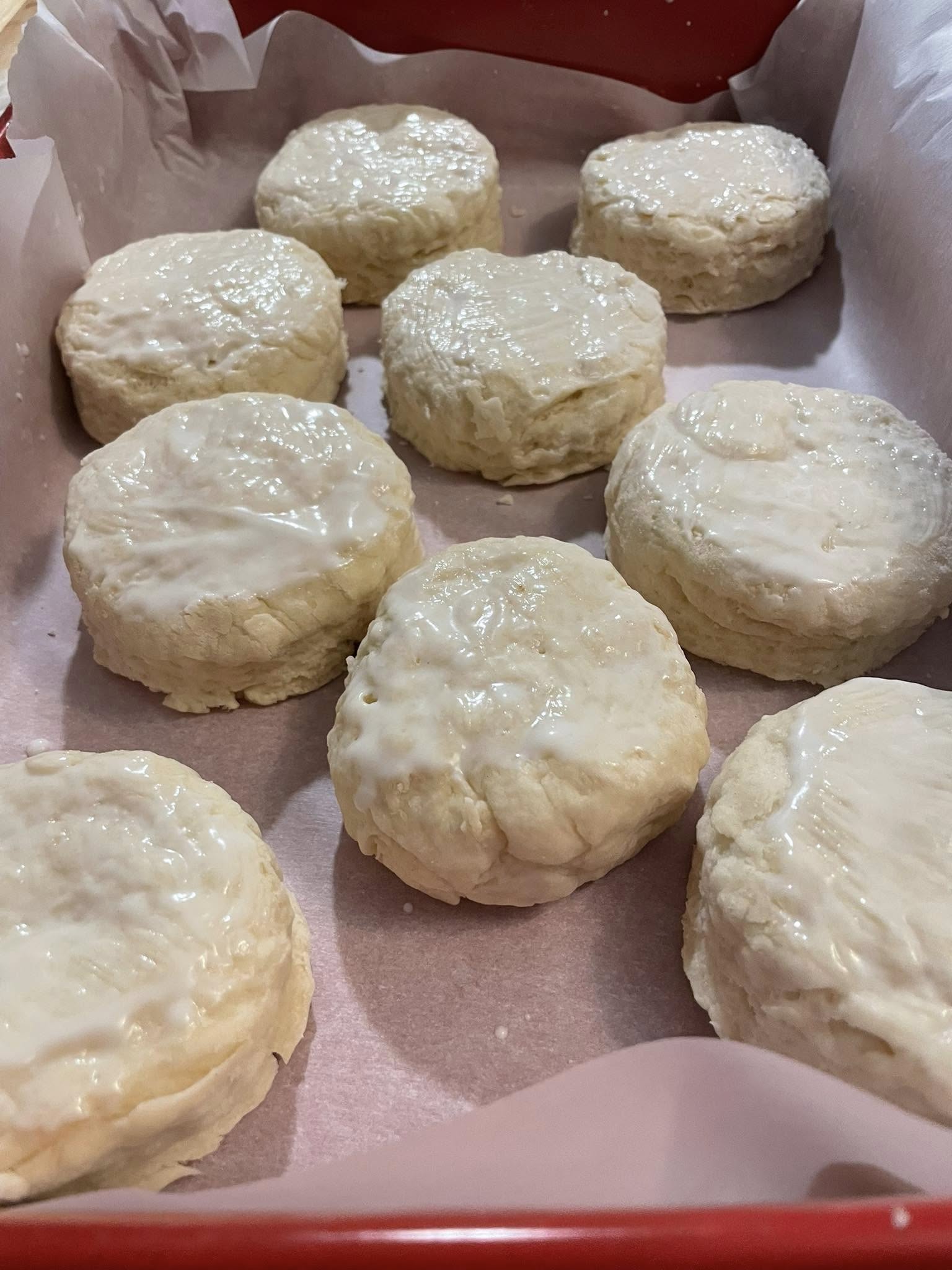
Pro Tip: For an extra golden top, brush the biscuits with buttermilk before baking.
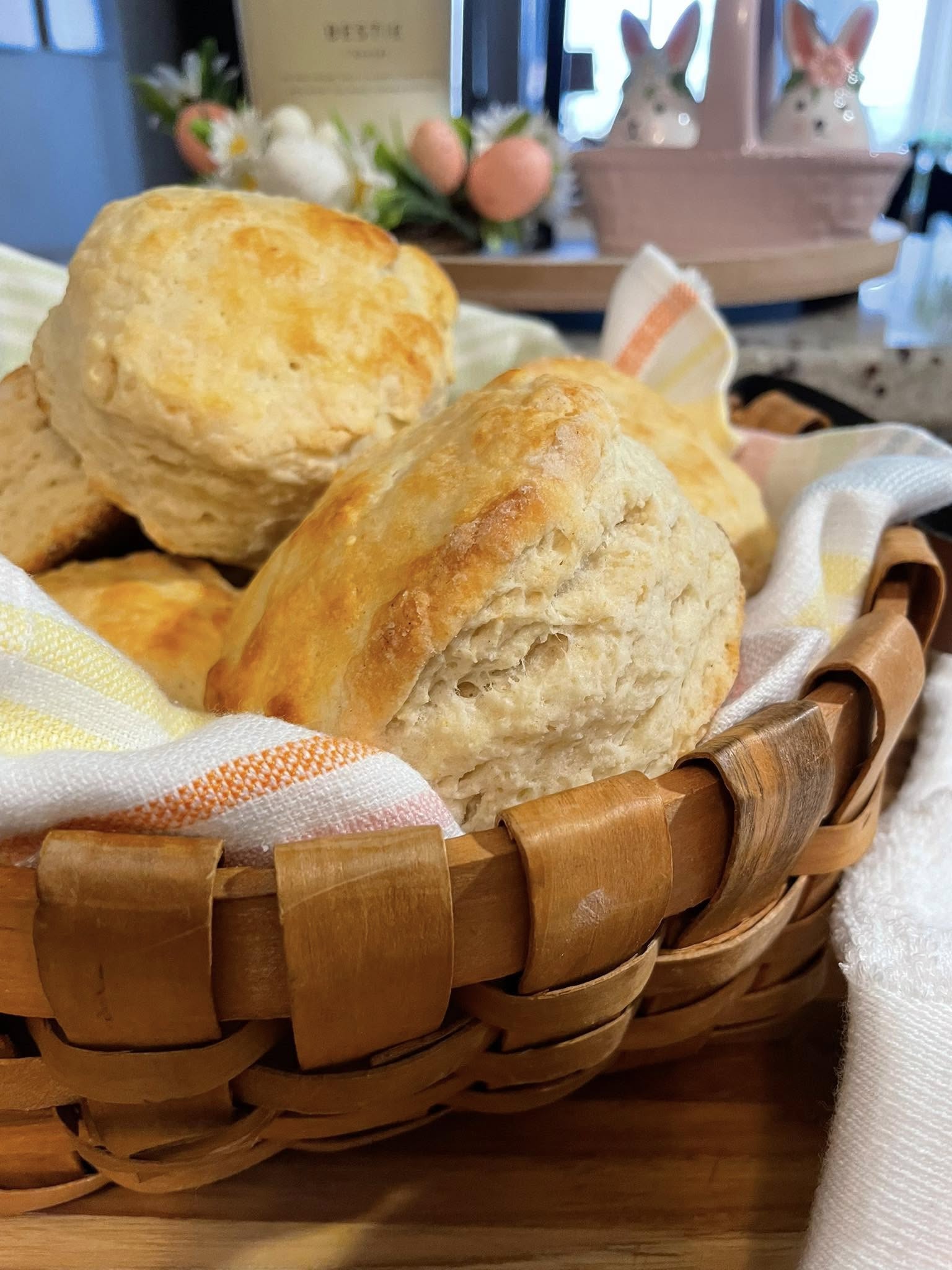
Extra Tips & Variations
- Storage: Keep in an airtight container at room temperature for 2 days, or freeze for up to 2 months.
- Reheat: Warm in a 300°F oven for 5–7 minutes to restore that fresh-baked feel.
- Serving Idea: Split and butter them, drizzle with honey, or pile high with sausage gravy.
- Flavor Twist: Add shredded cheddar and chopped chives for savory breakfast biscuits.
- Sweet Version: Sprinkle cinnamon sugar on top before baking.
Troubleshooting Guide
- Flat biscuits? Check that your baking powder is fresh.
- Dry biscuits? You may have added too much flour or overbaked.
- Dense biscuits? The butter may have been too warm before baking.
FAQ
Q: Can I make these without cream of tartar?
Yes — replace it with an equal amount of lemon juice or vinegar added to the buttermilk for similar lift.
Q: Why use both shortening and butter?
Shortening gives flakiness, butter adds flavor — the combo gives you the best of both worlds.
Q: Can I make the dough ahead?
Yes, cut the biscuits and refrigerate them on a baking sheet for up to 12 hours before baking.
Q: Can I use self-rising flour?
Yes, just skip the baking powder and salt in the recipe.
Q: Why are my biscuits tough?
Usually from overmixing or adding too much flour while shaping.
Q: Can I make drop biscuits instead?
Yes, just add a little extra buttermilk until the dough is scoopable, then drop by spoonfuls onto the baking sheet.
Serving Suggestions
These biscuits are perfect alongside soup, chili, or fried chicken. For dessert, try them split with macerated strawberries and homemade whipped cream for a Southern-style strawberry shortcake.
Food Debate: Do you butter your biscuit before adding jam, or pile it all on at once? I say butter first — every time.
More Recipes You’ll Enjoy
- Hot Cross Buns 9×13 Pan | Old‑Fashioned, Soft & Spiced
- One Bowl Gingerbread Bundt Cake – 5‑Minute Irresistible Holiday Classic
From Sunday dinners to Easter baskets, these old-fashioned buttermilk biscuits never fail to bring smiles to the table. Whether you’re serving them with savory soup or dressing them up for dessert, they’re pure homemade comfort. I’d love to hear how yours turn out — drop a comment below or share a photo so we can all admire that golden, flaky goodness!

Old-Fashioned Buttermilk BiscuitsDescription:
Ingredients
Method
- In a large bowl, mix flour, sugar, baking powder, salt, and cream of tartar.
- Cut in shortening (or shortening + butter) until mixture resembles coarse crumbs.
- Combine egg and buttermilk; add to dry ingredients and mix until just combined.
- Pat dough to desired thickness on a floured surface.
- Cut biscuits with a floured cutter and place on a parchment-lined pan.
- Bake at 425°F for 12 minutes or up to 20 minutes for thicker biscuits, until golden brown.
